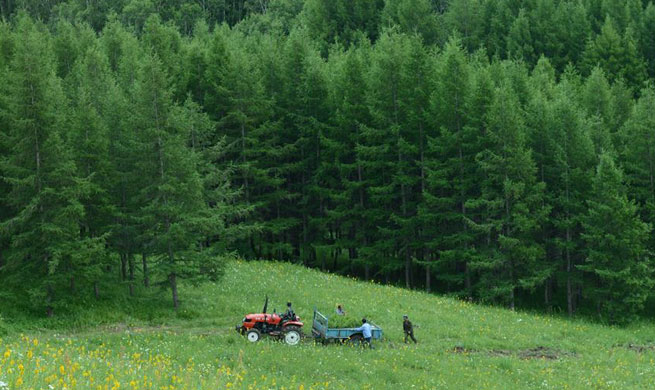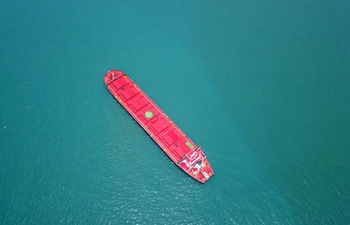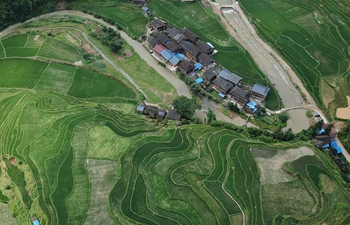WASHINGTON, June 27 (Xinhua) -- American scientists found large carbon-rich organic molecules ejected from cracks in the icy surface of Saturn's moon Enceladus.
With complex organic molecules emanating from its liquid water ocean, this moon is the only body besides Earth known to simultaneously satisfy all of the basic requirements for life as people know, according to a study published on Wednesday in the journal Nature.
"Previously we'd only identified the simplest organic molecules containing a few carbon atoms," said Christopher Glein, a space scientist specializing in extraterrestrial chemical oceanography at Southwest Research Institute and the paper's co-author.
"Now we've found organic molecules with masses above 200 atomic mass units. That's over ten times heavier than methane," said Glein.
Scientists suggested that chemical reactions between the moon's rocky core and warm water from its subsurface ocean are linked to these complex molecules.
Prior to its deorbit in September of 2017, Cassini spacecraft sampled the plume of material emerging from the subsurface of Enceladus.
The Cosmic Dust Analyzer (CDA) and the Ion and Neutral Mass Spectrometer (INMS) made measurements both within the plume and Saturn's E-ring, which is formed by plume ice grains escaping Enceladus' gravity.
Previous flybys provided evidence for a global subsurface ocean residing above a rocky core.
During Cassini's close flyby of Enceladus on October 28, 2015, INMS detected molecular hydrogen as the spacecraft flew through the plume.
Molecular hydrogen in the plume is thought to have formed by the geochemical interaction between water and rocks in hydrothermal environments, according to the study.
"Hydrogen provides a source of chemical energy supporting microbes that live in the Earth's oceans near hydrothermal vents," said Hunter Waite, INMS principal investigator and a co-author of the paper.
"Once you have identified a potential food source for microbes, the next question to ask is: what is the nature of the complex organics in the ocean? This paper represents the first step in that understanding: complexity in the organic chemistry beyond our expectations," said Waite.

















